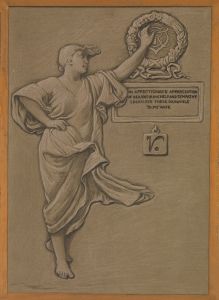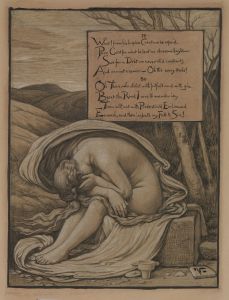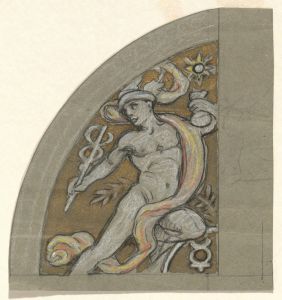
Death’s Review
A hand-painted replica of Elihu Vedder’s masterpiece Death’s Review, meticulously crafted by professional artists to capture the true essence of the original. Each piece is created with museum-quality canvas and rare mineral pigments, carefully painted by experienced artists with delicate brushstrokes and rich, layered colors to perfectly recreate the texture of the original artwork. Unlike machine-printed reproductions, this hand-painted version brings the painting to life, infused with the artist’s emotions and skill in every stroke. Whether for personal collection or home decoration, it instantly elevates the artistic atmosphere of any space.
Elihu Vedder was an American symbolist painter, known for his mystical and allegorical works. One of his notable paintings is "Death’s Review," which reflects his interest in themes of mortality and the afterlife. Vedder was part of the 19th-century symbolist movement, which sought to express ideas and emotions through symbolic imagery and often drew inspiration from literature, mythology, and philosophy.
"Death’s Review" is a compelling example of Vedder's symbolic style. The painting is characterized by its use of allegory to explore the concept of death and the human condition. Vedder's work often features dreamlike and fantastical elements, and "Death’s Review" is no exception. The painting invites viewers to contemplate the inevitability of death and the transient nature of life.
Vedder was influenced by a variety of sources, including classical mythology and the Romantic literary movement. His travels in Europe, particularly in Italy, exposed him to Renaissance art and the works of the Pre-Raphaelites, which also informed his artistic style. These influences are evident in the detailed and intricate composition of "Death’s Review," as well as in its use of rich symbolism.
The painting likely incorporates elements that reflect Vedder's philosophical interests, particularly his engagement with themes of existentialism and the human psyche. Vedder was known to be interested in the writings of Edgar Allan Poe and other authors who explored dark and introspective themes. This interest is mirrored in the somber and contemplative tone of "Death’s Review."
Elihu Vedder's work, including "Death’s Review," was well-received during his lifetime, and he was considered a prominent figure in the American art scene. His paintings were exhibited in both the United States and Europe, and he gained a reputation for his unique ability to blend realism with fantastical elements. Vedder's work continues to be studied and appreciated for its depth and complexity.
"Death’s Review" remains an important piece within Vedder's oeuvre, illustrating his mastery of symbolism and his ability to convey profound philosophical ideas through art. The painting is a testament to Vedder's skill in using visual imagery to explore themes that are both timeless and universal. While specific details about the painting's creation and its current location may not be widely documented, its significance within Vedder's body of work is well-recognized.
Overall, "Death’s Review" exemplifies Elihu Vedder's contribution to the symbolist movement and his enduring influence on the art world. Through his exploration of mortality and the human experience, Vedder invites viewers to reflect on the deeper meanings of life and death, making "Death’s Review" a thought-provoking and enduring work of art.














